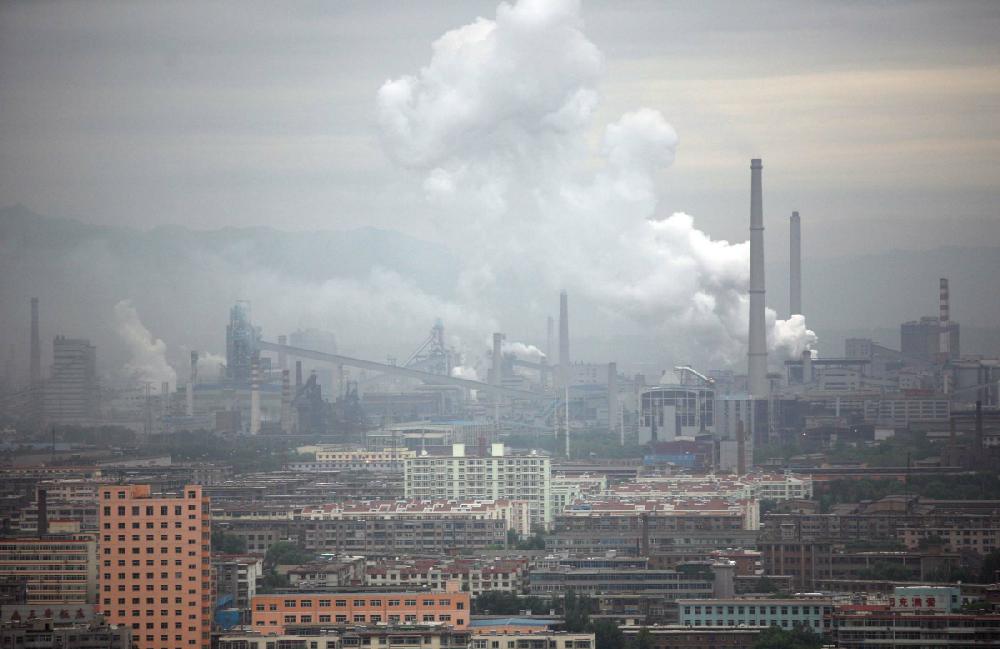The European Parliament voted overwhelmingly Tuesday to ratify the Paris climate accord, a move that will make the international agreement a legal reality long before even those who negotiated it expected.
"We made the deal in Europe, and we make it a reality in Europe," Miguel Arias Canete, the European Union's climate and energy commissioner, said on Twitter after the vote.
The Paris agreement enters into force when at least 55 countries, representing 55 percent of global emissions, have joined it. Before Tuesday, those numbers stood at 62 nations and just shy of 52 percent of emissions, thanks to ratification by India over the weekend.
In the presence of United Nations Secretary-General Ban Ki-moon, the lawmakers on Tuesday voted 610-38 with 31 abstentions for the 28 EU nations to simultaneously ratify the agreement to limit global warming.
"With the action taken by the EU parliament, I am confident that we will be able to cross the 55 percent threshold very soon, in a matter of days," Ban told reporters.
The nations of the EU collectively are responsible for 12.1 percent of the planet's emissions, and its fast-track ratification takes the Paris Agreement past the 55 percent threshold. The handover to the U.N. of a legal document formally doing that is expected to happen by Friday.
But although the EU will now join as a whole, only seven of its member countries have individually ratified the agreement. That includes big emitters Germany (2.56 percent of global emissions) and France (1.34 percent), which should be more than enough to bring the deal across the goal line.
There is then a 30-day period before the agreement legally enters into force. The milestone drew wide celebration from supporters on Tuesday.
"The entry into force of the Paris agreement less than one year after its signature is a massive achievement, given that it took eight years for the Kyoto protocol," European Parliament President Martin Schulz said in a statement.
International momentum has been building to ensure that the deal could enter into force by the next U.N. climate conference, which starts Nov. 7 in Marrakech, Morocco.
Throughout much of 2016, world leaders have pushed to bring the Paris agreement into force as early as possible, with the United States and China leading the drive.
Now the focus shifts to thornier issues -- namely, how the world will actually get to a place where it's possible to limit the warming of the planet to "well below" 2 degrees Celsius, or 3.6 degrees Fahrenheit, above preindustrial levels, as the Paris agreement calls for. It's far easier for countries to sign an agreement than it is for them to meet their pledges to reduce carbon-dioxide emissions, let alone increase those ambitions over time.
Scientific observers broadly agree that the individual pledges made by countries under the Paris agreement are not strong enough to stave off the worst effects of climate change. Even as countries have moved rapidly to ratify the Paris accord, the window for hitting the agreement's targets is closing. According to the more pessimistic voices, it could already be closed.
Among those is former NASA scientist James Hansen, who released a paper Tuesday declaring that the world, at 1.3 degrees Celsius above what he terms preindustrial levels in 2016, is likely already well past any climate safe zone. Hansen claims that atmospheric carbon-dioxide concentrations are far too high already and that the planet is as hot as it was in the most recent interglacial period, more than 100,000 years ago.
Information for this article was contributed by staff members of The Associated Press.
A Section on 10/05/2016
